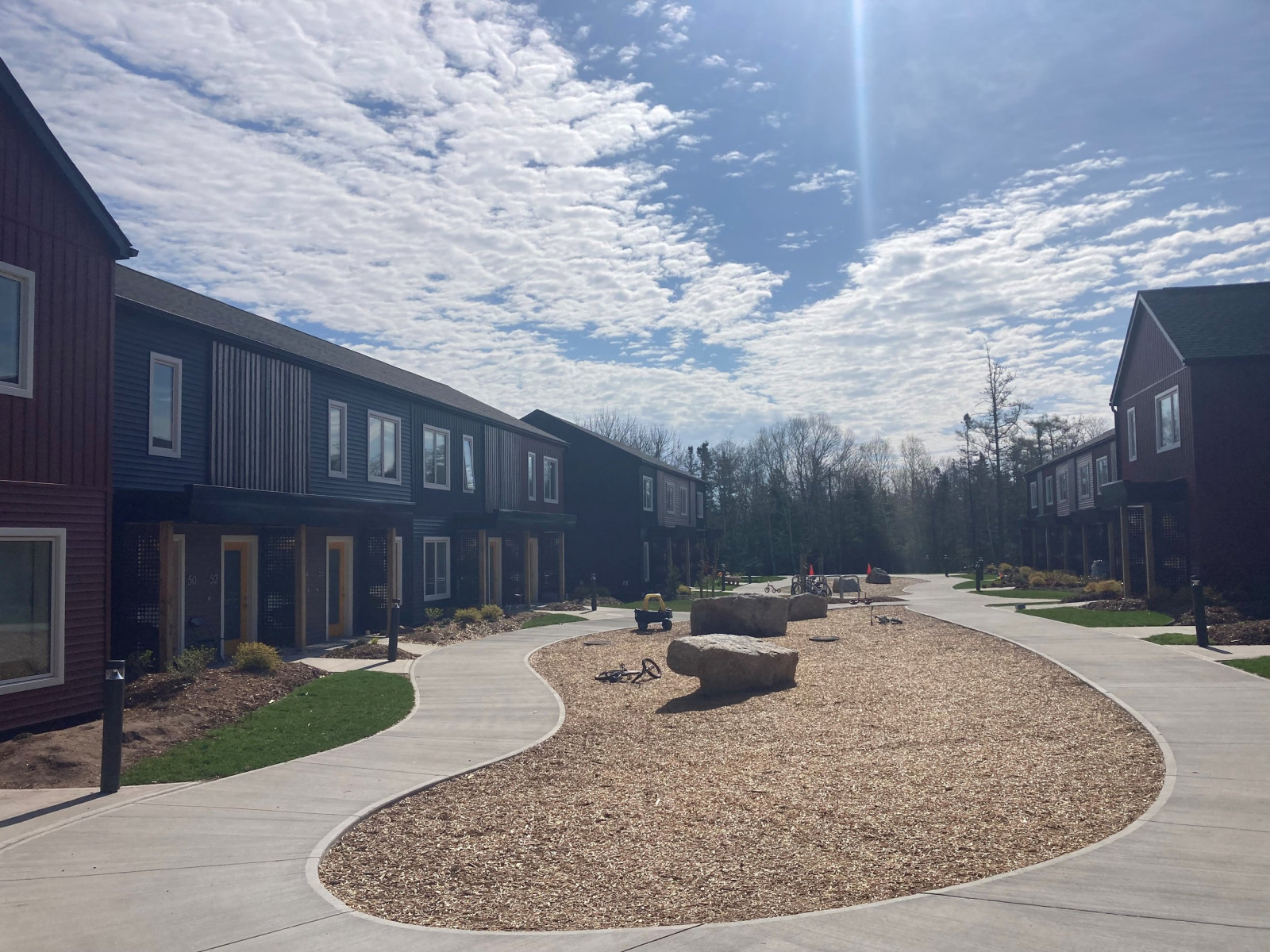As housing providers in Halifax look for ways to meet the city’s housing crisis, some are turning to green building practices.
In addition to renewable energy from sources like rooftop solar, passive design principles — which include extra insulation, airtight construction, triple-paned windows, and strategic building siting — help create low or no-emission buildings.
But two non-profit housing providers say it’s also a way to create housing that’s sustainable in another way, by ensuring operating costs will be low — and the buildings comfortable to live in — for decades to come.
And with the number of unhoused people in HRM climbing to more than 1,000 — and rents rising faster in Nova Scotia than anywhere else in Canada — even as the need to tackle emissions from buildings increases, housing providers say new developments are a way to show how to tackle two issues at once.
“Really what we’re saying is that housing can be affordable, accessible, sustainable, and beautiful,” says Sheri Lecker, executive director of Adsum for Women and Children. “Just because you live in affordable housing doesn’t mean you have to compromise any of the other values.”
For Adsum, this started when the non-profit was weighing what to do with a large piece of land in Lakeside, on which they’d run transitional housing for decades. Recognizing the opportunity the land represented, the organization decided to redevelop to create permanent dwellings.
Having previously read an article about the local design firm Passive Design Solutions, when Adsum made the decision to build, Lecker saw an opportunity to collaborate.
The resulting development — called “Sunflower” — consists of 25 units, with a mix of one-, two- and three-bedroom units, built around a central courtyard, as well as a community space. In total, the development cost roughly $7.2 million, from a mix of federal and provincial funds, as well as Adsum’s own fundraising.
Buildings were designed to maximize natural daylight and energy efficiency, and use durable interior and exterior finishings. Adsum has also added solar, and taken together, these measures mean the development is either at net-zero, or very close, says Lecker.
While this adds expenses upfront, Lecker says it ensures utilities and other operating costs are kept low, which is essential in sustaining affordable housing over the long term; tenants pay no more than 30 per cent of their pre-tax income in rent, which means rents hovering around $300/month.

“If the rents are not really high, it’s really important we build something that is financially sustainable, based on relatively modest rents,” she says. “But also, it was really important to us that we had a smaller carbon footprint — that we’re building for the future.”
Sunflower’s tenants moved in in September 2022.
Meanwhile, the Affordable Housing Association of Nova Scotia has completed the first phase of an affordable townhouse development in Dartmouth, using passive housing principles, for which AHANS also worked with Passive Design Solutions.
The development, called True North, currently includes 32 units, and will ultimately contain 44, with a mix of affordable and market rents.
“If we’re building new, we need to set the example that our carbon footprint — of everyone, regardless of what your income or what your rent is — is something that needs to be accounted for,” says Michael Kabalen, executive director of AHANS.
And as with Adsum, front-end costs are higher than with a typical build, but operating costs are lower over the life of the property.
“We’re in this for the long haul, we want to build assets that belong to the community,” he says. “So that extra delay to ensure that the asset can stay in the community and stay affordable for longer is well worth the investment.”
True North, whose first tenants moved in last year, is nearing completion of phase two. AHANS anticipates welcoming those tenants in May or June.
As for Adsum, Lecker says the organization is planning for a second stage, called Sunflower Two, which will add 15 units of housing on the same site as their first development, connected by a network of paths.
While Lecker says these projects won’t solve the housing crisis — housing providers say housing development overall is still not keeping up with the need — they do offer permanent housing. And in so doing, they show how housing that’s good for the planet — and for human communities — is possible.
“The idea that people have security and permanence and know that they can afford where they live, and they live in a beautiful little pocket community where they know their neighbours — isn’t that what people want?”
This story is being shared by the Climate Story Network, an initiative of Climate Focus, a non-profit organization dedicated to covering stories about community climate solutions




Comments